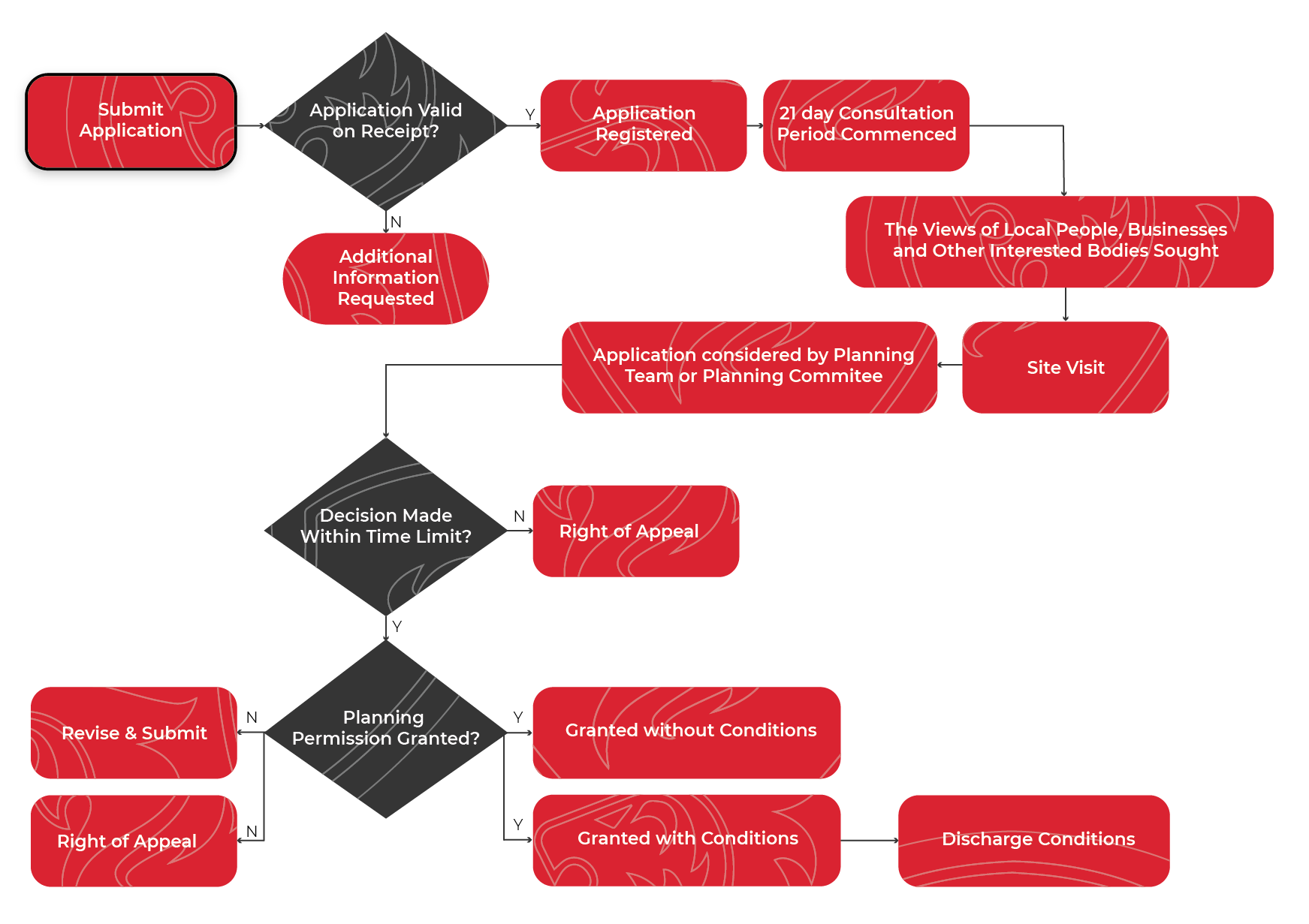We optimise sites with carefully crafted and considered planning applications. It is both an art and a science!
Before delving into super detailed planning content, we thought you would best benefit from first seeing an overview of our Methodology (below):
The Stronghold Infinity System

The planning control process involves managing the development of land and buildings. We are preserving what we can of our heritage and improving the infrastructure upon which we rely for a civilized society. Any development, from an extension to a new shopping center, must be approved by your local planning authority. An overview of England’s planning system has been published by the Government in plain English.
<
THE PLANNING PROCESS

<
LOCAL PLANS
In planning, decisions are made regarding the future of our cities, towns, and countryside. Our desire to develop the areas where we live and work must be balanced with ensuring the environment is not negatively affected. Future communities’ sustainable needs must be considered. An area’s planning policies must be outlined in a local plan prepared by the local planning authority. When deciding planning applications, these factors are very important.
Independent planning inspectors must review all local plan documents prepared by local authorities in England. The local plan examination is the last step in the process. Everyone with an interest in the document should have been able to participate in the process and make comments.
As required by section 20 of the Planning and Compulsory Purchase Act 2004 (as amended) and the National Planning Policy Framework, local plans must be prepared, justified, effective, and consistent with national policy.
England’s local plans provide the framework for development once they are adopted.
The local planning authority (LPA), which is usually a department of the council, decides whether a proposed development should proceed or not. This is called planning permission.
Almost all new buildings, major alterations to existing buildings, and major changes to land or buildings require this permission. Minor building projects, known as permitted development, do not need planning permission. It is unlikely that such developments will have a significant effect on neighbours or the surrounding environment. Building a boundary wall below a certain height, for example. A change in land or building use is also considered permitted development if it’s within the same use class.
Certain developments are protected in other areas. Special protection is warranted for the following reasons:
- The protection of attractive landscapes, such as national parks, is essential
- Interesting plants and/or wildlife should be protected
- Control the spread of towns and villages into open countryside, for example by establishing a Green Belt
- Protect buildings or monuments of architectural or historical interest.
- Occasionally, controversial applications or large proposals of national significance are ‘called in’ to be decided by the First Secretary of State instead of the LPA.
Note that Building Regulations approval is a separate matter from obtaining planning permission.
<

 Social
Social




